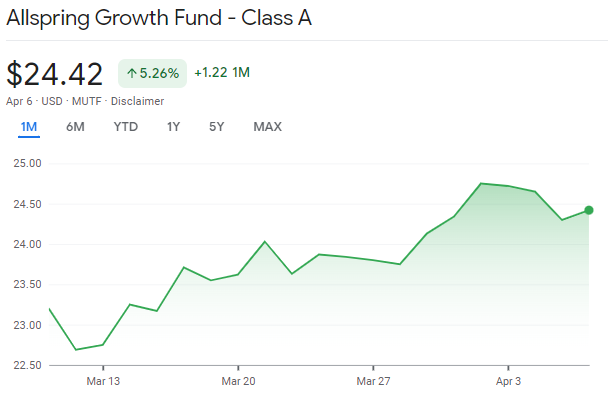Wells Fargo Mutual Funds now known as Allspring Mutual Funds might be less known than it’s erstwhile Parent Wells Fargo bank which is synonymous with the world of banking and financial services. But did you know that this financial giant also offered a range of investment opportunities in the form of mutual funds. Though it has recently sold it’s asset management business to Allspring Global Investments. If you’re a beginner or experienced investor, Allspring mutual funds might just be the perfect starting point for your journey to financial success.

In this article, we’ll cover everything you need to know about Wells Fargo mutual funds, from the basics to technical analysis details for some popular funds. So, let’s dive in!
What are Wells Fargo Mutual Funds (Allspring mutual funds)?
Mutual funds are investment vehicles that pool together money from various investors to purchase a diversified portfolio of stocks, bonds, or other securities. Wells Fargo offers a wide range of mutual funds, catering to different investment goals and risk appetites. Some popular categories include:
- Equity Funds
- Fixed Income Funds
- Money Market Funds
- Balanced Funds
Why Choose Wells Fargo Mutual Funds?
Wells Fargo boasts a rich history of investment management, dating back to the late 1800s. With a team of experienced professionals and a variety of investment strategies, Wells Fargo mutual funds offer several benefits:
- Active vs. Passive Management: Some Wells Fargo mutual funds are actively managed, meaning the fund managers make deliberate decisions on which securities to buy and sell in an attempt to outperform a benchmark index. On the other hand, some funds are passively managed and aim to replicate the performance of a specific index. Actively managed funds typically have higher expense ratios due to the additional research and trading involved.
- Fund Classes: Wells Fargo mutual funds offer different share classes, each with its own expense structure and minimum investment requirements. The most common share classes are Class A, Class C, and Institutional Class shares. Class A shares typically have a front-end sales load, while Class C shares may have a higher ongoing expense ratio but no front-end sales load. Institutional Class shares generally have lower expense ratios, but higher minimum investment requirements, making them more suitable for institutional investors.
Now that you have a basic understanding of Wells Fargo mutual funds, let’s explore some technical analysis details to help you make informed investment decisions.
Top Wells Fargo Mutual Funds
Here’s a more extensive table showcasing a variety of Wells Fargo mutual funds across different categories:
| Fund Name | Category | 5-Year Annualized Return | Expense Ratio |
|---|---|---|---|
| Allspring Small Company Growth Fund (WFSAX) | Small Growth | 7.32% | 1.34% |
| Allspring Premier Large Company Growth R6 (EKJFX) | Multi-Cap Growth | 9.11% | 0.65% |
| Allspring Global Dividend Opportunity Fund (EOD) | Global Equity | 15.67% | 1.08% |
| Allspring Municipal Bond Fund (WMFAX) | Muni National Int | 3.72% | 0.77% |
| Allspring Core Bond Fund (WTRIX) | Intermediate Core Bond | 1.05% | 0.44% |
| Allspring Special Mid Cap Value Fund Insti Class (WFMIX) | Large Blend | 9.11% | 0.79% |
| Allspring Short-Term High Income Fund (WFHYX) | Short-Term High Yield | 2.38% | 1.67% |
| Allspring Growth Fund (SGRAX) | Large Growth | 21.55% | 1.16% |
| Allspring Income Opportunities Fund (EAD) | High Yield | -4.55% | 0.96% |
*The data mentioned above is for illustrative purposes only and may not be up-to-date. Please consult a financial advisor or visit the Wells Fargo website for the latest information.

Wells Fargo mutual funds offer a great starting point for beginner investors, with a range of funds catering to different investment objectives and risk appetites. Remember, it’s essential to research and analyze funds before making any investment decisions. There are other investment options like one provided by Vanguard, which are more well-known and most sought after.
